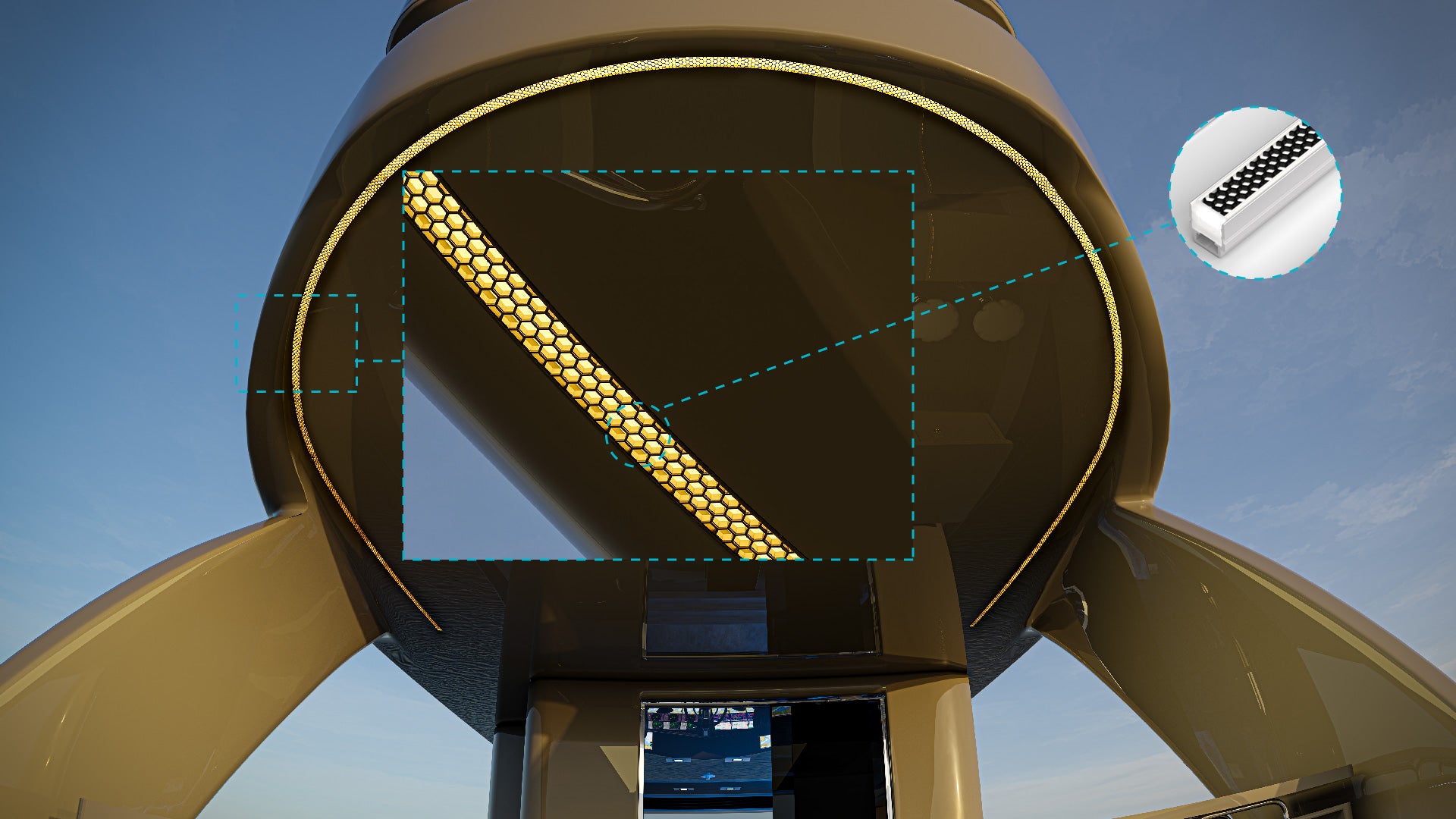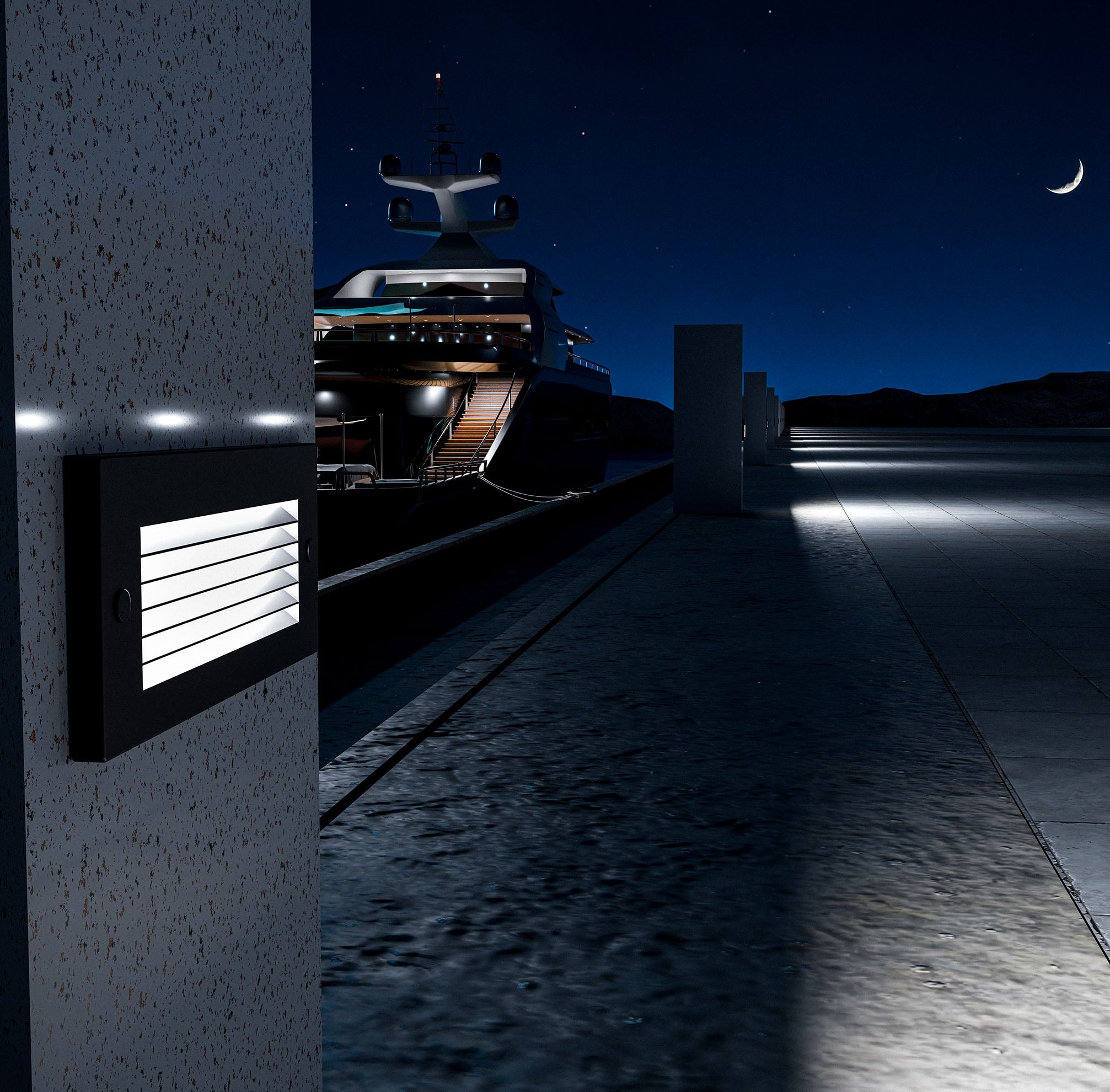Whether you’re a new boat owner, a marine enthusiast, or someone looking to expand your knowledge, understanding essential boat terminology is key to navigating, maintaining, and enhancing your vessel. This guide covers important parts of a boat, marine lighting terms, and electrical standards to ensure safe and efficient boating.
Parts of a Boat: Key Terminology and Definitions
Knowing the basic parts of a boat is fundamental for communication, maintenance, and operation. Here are the primary terms you should know:
Bow: The bow is the front end of the boat, where the vessel moves forward in the water. It’s often designed to cut through the water, making it streamlined for efficiency. The bow is crucial for navigation as it helps with identifying direction, especially when docking or approaching other vessels.
Stern: The stern refers to the back end of the boat, opposite the bow. The engine or outboard motor is typically mounted on the stern. Having good lighting at the stern helps with visibility when the boat is in reverse or when anchored at night.
Port and Starboard: Port is the left side of the boat when facing the bow, and starboard is the right side. This terminology is essential for directional commands, especially when docking, anchoring, or navigating in tight spaces. Navigation lights on port (red) and starboard (green) help indicate the boat’s direction to other vessels at night.
Hull: The hull is the body of the boat that rests in the water, providing structure and buoyancy. Hulls come in various shapes and designs, affecting the boat’s stability, speed, and handling. Inspecting and maintaining the hull is crucial for long-term durability and safety.
Deck: The deck is the flat, accessible surface on top of the hull where passengers and crew can walk, sit, or stand. Deck lighting ensures visibility at night and helps to prevent slips and falls in low-light conditions.
Keel: The keel is a structural component along the centerline at the bottom of the hull, often extending downward. It provides stability by helping to keep the boat upright in the water. The keel’s design can also aid in resisting sideways movement, which is important for sailboats.
Cockpit: The cockpit is the area where the boat’s controls are located, typically around the helm or steering wheel. This is the operational hub for navigation and often has instruments for speed, direction, and communication.
Transom: The transom is the flat, vertical section at the stern where the engine or motor is mounted. It’s also where you’ll find boat registration numbers on most vessels.
Helm: The helm is the steering station where the boat is controlled, typically located in the cockpit. It includes the steering wheel, throttle, and various instruments needed to operate the boat.
Marine Lighting Terminology: Understanding Photometrics and Light Performance
Marine lighting requires specific standards to ensure visibility, safety, and ambiance. Here’s an overview of important lighting terms:
Photometrics: Photometrics refers to the measurement of light intensity and distribution. In marine lighting, photometric data helps determine how light will illuminate certain areas, important for ensuring both visibility and ambiance. Choosing lights with the correct photometric properties is crucial for task lighting on decks or accent lighting in cabins.
Lumens: Lumens measure the total light output from a light source. The higher the lumen count, the brighter the light. For example, high-lumen lights are ideal for visibility in the cockpit or when docking, while lower-lumen lights work well for creating ambient lighting.
Candelas: Candelas measure the intensity of light in a specific direction. This is particularly useful for focused lighting, like navigational spotlights, which require high-intensity light to see far distances in a single direction.
Color Temperature (Kelvin): Color temperature, measured in Kelvin (K), indicates the color of the light produced. Warm light (2700K-3000K) has a soft, yellowish hue, suitable for creating a cozy cabin atmosphere. Cool light (4000K-5000K) is brighter and closer to daylight, ideal for task areas like the helm or cockpit.
Lighting Quality and Protection Ratings for Marine Environments
Lighting quality and durability are vital, especially in challenging marine environments with exposure to water, salt, and UV rays.
CRI (Color Rendering Index): CRI measures a light’s ability to reveal colors accurately, rated on a scale of 0 to 100. For cabin and task lighting, a CRI of 80+ is recommended to accurately display colors, which is especially useful for reading charts or performing detailed tasks.
IP Ratings (Ingress Protection): IP ratings indicate how well a light is protected against solids (like dust) and liquids (like water). For example, IP67-rated lights are fully dust-tight and can withstand temporary submersion in water, making them ideal for exterior deck lighting and areas prone to splashes or rain exposure.
Beam Angle: The beam angle refers to the spread of light emitted. Narrow beams (15–30°) are great for spotlights and focused lighting, while wide beams (60–120°) are ideal for general area lighting. Choosing the correct beam angle ensures you have the right light distribution for each area on your boat.
Correlated Color Temperature (CCT): CCT is another measure of color temperature that helps create different moods on board. Warm CCT (around 3000K) is suitable for relaxing areas, while cool CCT (up to 5000K) provides a more functional light for workspaces.
Key Electrical Terms for Safe Boat Lighting
Understanding basic electrical terms is crucial for maintaining a safe and efficient lighting system on your boat.
Wattage: Wattage indicates the power consumption of a light. LEDs, for example, consume less wattage than traditional incandescent bulbs, making them an energy-efficient choice for marine lighting where battery power is essential.
Voltage: Voltage is the electric potential required to operate the light. Marine lighting typically operates on 12V or 24V systems, so it’s important to ensure compatibility with your boat’s power supply to prevent electrical issues.
Amperage (Amps): Amperage measures the current flowing through a circuit. Knowing the amperage is important for selecting the right wire gauge, as it affects safe power distribution throughout the boat’s electrical system.
Navigational and Safety Lighting Terms
Safety and navigation lights are required on all boats to indicate their position and direction to other vessels, especially at night.
Navigation Lights: Navigation lights include red (port) and green (starboard) lights, which indicate the boat’s direction to others. These lights are required for safety, helping other boats understand your position and movement.
Anchor Lights: An anchor light is a white light, typically located at the highest point on the boat, indicating that the vessel is anchored. This light helps other vessels see a stationary boat in the dark, reducing the risk of collision.
Running Lights: Running lights are a set of lights used to indicate the position and direction of a moving boat. They include port, starboard, and stern lights, which help other vessels avoid collisions by making your boat’s movement and direction clear.
Other Useful Marine Lighting and Equipment Terms
Here are additional lighting and equipment terms relevant to boaters:
Floodlights and Spotlights: Floodlights have wide beam angles, covering large areas, making them ideal for deck lighting. Spotlights, with narrow beams, provide intense, focused light over longer distances, perfect for navigation or locating objects in the water.
Docking Lights: Docking lights illuminate the area around the dock, making it easier to see when docking or departing at night. They help increase safety and visibility for both crew and other vessels nearby.
Dimmer Controls: Dimmer controls allow you to adjust the brightness of your lighting, which is useful for creating different atmospheres. For example, you might use brighter lights during tasks, then dim them for a relaxing evening onboard.
Underwater Lights: Underwater lights are installed beneath the waterline to illuminate the surrounding water. These lights are popular for aesthetic purposes, attracting marine life, and enhancing the ambiance around the boat.
Understanding boat and lighting terminology is crucial for any boat owner, helping ensure that you can safely operate and maintain your vessel. From knowing the basic parts of a boat to understanding advanced lighting terms like photometrics and IP ratings, being well-informed enhances both your boating experience and safety.
K2 Lighting offers a variety of high-quality, marine-rated lighting options that meet industry standards in CRI, IP ratings, color temperature, and more. With reliable marine lighting solutions, K2 Lighting can help you achieve safe, efficient, and aesthetically pleasing illumination for every part of your boat.
Whether you’re outfitting your boat’s interior, enhancing its exterior visibility, or ensuring compliance with navigation light regulations, K2 Lighting has the right solutions to fit your needs.





